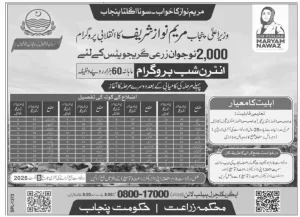The Integrated Reproductive Maternal Newborn Child Health and Nutrition Program (IRMNCHNP) in Punjab, Pakistan, is a comprehensive initiative aimed at improving health outcomes for women, children, and newborns. This program integrates various health services to enhance access and coverage, particularly for vulnerable populations in rural and underserved urban areas. The following sections will explore the structure, objectives, implementation strategies, and evaluation of the program.
Table of Contents
Background
Historical Context
The IRMNCHNP evolved from earlier maternal and child health initiatives, notably the National Maternal and Newborn Child Health (MNCH) Program launched in 2006. This program focused on reducing maternal and child mortality rates through improved healthcare services. In 2013, the MNCH program was merged with nutrition initiatives to form the IRMNCHNP, reflecting a holistic approach to health services[1][3].
Objectives of the Program
The primary objectives of the IRMNCHNP are:
- Improve Health Outcomes: Enhance maternal, newborn, and child health by increasing access to essential health services.
- Reduce Mortality Rates: Target reductions in neonatal and under-five mortality rates through effective interventions.
- Nutrition Focus: Address malnutrition among women and children, particularly stunting in rural areas[1][3][7].
Program Structure
Components of the IRMNCHNP
The program consists of several key components that work synergistically to achieve its goals:
- Community Health Services: Engagement of Lady Health Workers (LHWs) to provide preventive and curative services at the community level.
- Emergency Obstetric Care: Establishment of Basic Emergency Obstetric and Newborn Care (BEmONC) facilities across Punjab.
- Nutrition Services: Implementation of nutrition programs targeting micronutrient deficiencies among pregnant women and young children[1][2][4].
Implementation Framework
The IRMNCHNP operates across all 36 districts of Punjab through a network of healthcare facilities including:
- Basic Health Units (BHUs): Providing 24/7 services.
- Outdoor Therapeutic Programs (OTPs): Addressing acute malnutrition.
- Stabilization Centers (SCs): For severe cases requiring intensive care[2][3][4].
Strategies for Implementation
Capacity Building
Training programs for healthcare providers are crucial for effective service delivery. The program emphasizes:
- Continuous professional development for LHWs and community midwives.
- Workshops and training sessions focused on maternal and child health best practices[3][5].
Community Engagement
Active community participation is encouraged through:
- Awareness campaigns on maternal and child health issues.
- Involvement of local leaders to foster trust and participation in health programs[1][7].
Monitoring and Evaluation
Regular assessments are conducted to evaluate the effectiveness of the program:
- Utilization of national surveys like Punjab MICS and PDHS for performance tracking.
- Independent evaluations to measure progress against set targets[3][7].
Challenges Faced
Despite its successes, the IRMNCHNP encounters several challenges:
- Resource Limitations: Insufficient funding for training and capacity building hampers program effectiveness.
- Geographical Barriers: Difficulties in reaching remote areas limit service accessibility.
- Cultural Barriers: Societal norms may impede women’s access to healthcare services[4][5][6].
Impact Assessment
Achievements
The IRMNCHNP has made significant strides in improving health indicators:
- Reduction in neonatal mortality rates from 55 to 42 per 1,000 live births between 2016 and 2020.
- Increased coverage of antenatal care from 60% to 75% during the same period[3][4].
Future Directions
To sustain progress, the program aims to:
- Expand outreach efforts to cover more remote areas.
- Enhance training programs for healthcare workers.
- Increase collaboration with international organizations for technical support and funding[5][7].
Conclusion
The Integrated Reproductive Maternal Newborn Child Health and Nutrition Program represents a vital effort by the Government of Punjab to address critical health challenges faced by women and children. Through its integrated approach, the program not only seeks to improve health outcomes but also aims to empower communities by enhancing their access to essential health services. Continued investment in training, resources, and community engagement will be essential for sustaining these improvements.
Tables
| Component | Description |
|---|---|
| Community Health Services | Engagement of LHWs providing preventive/curative services |
| Emergency Obstetric Care | Establishment of BEmONC facilities |
| Nutrition Services | Programs targeting micronutrient deficiencies |
Diagrams
+-------------------------+
| IRMNCHNP |
+-------------------------+
| Community Services |
| Emergency Care |
| Nutrition Programs |
+-------------------------+This structured overview provides a comprehensive understanding of the IRMNCHNP’s objectives, implementation strategies, challenges faced, impact assessment, and future directions.
C

